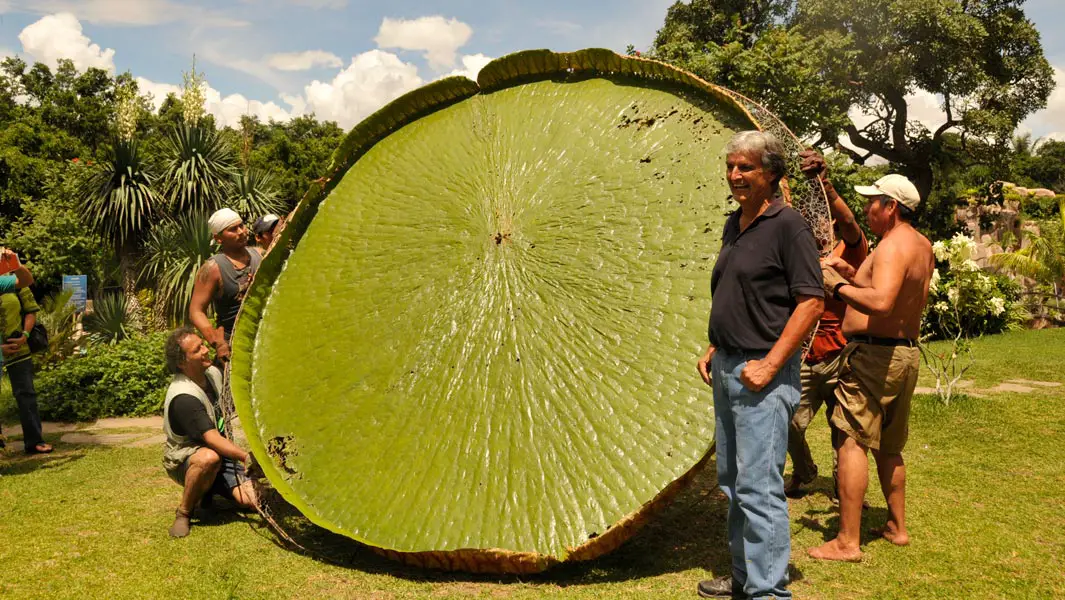


The largest waterlily species is the newly identified Victoria boliviana, which in cultivation has floating pads that grow in excess of 2.8 m (9 ft 2 in) in diameter. Its flowers can span up to 36 cm (1 ft 2 in) wide – about the same as a car’s steering wheel. The aquatic plant is native to the Llanos de Moxos tropical savannah of El Beni department in north-east Bolivia. The largest specimen overall is a 3.2-m (10-ft 6-in) leaf grown at La Rinconada ecological park in Santa Cruz de la Sierra, Bolivia, as measured on 3 February 2012; this is the largest undivided/simple leaf of any plant on record. The new species was first described in the journal Frontiers in Plant Science on 4 July 2022.
Until now, the record was considered to be held by Victoria amazonica, a species now known to be restricted to the Amazon river basin in northern South America. Along with V. cruziana of the Paraná River system in Brazil, Paraguay and Argentina, these two species were, until now, thought to represent the entire genus. However, new research into the plant’s morphology, genomics and geographical distribution confirmed the existence of a distinct third species – V. boliviana, which is, in fact, the largest of the three. A fourth potential species, currently regarded as the form V. cruziana f. mattogrossensis may also be identified with further research.
By comparison, the pads of V. amazonica and V. cruziana are estimated to grow to 2.3 m (7 ft 6.5 in) and 2.4 m (7 ft 10.5 in), respectively, with flowers up to 28 cm (11 in) and 30 cm (11.8 in). One of the largest waterlily leaves recorded in cultivation up till now was a 2.6-m-wide pad on a hybrid V. amazonica x cruziana grown at Royal Botanic Gardens, Kew, UK, in July 1995.
The research was a collaboration between Royal Botanic Gardens, Kew (UK), Universidad Mayor de San Andrés, Jardín Botánico Municipal de Santa Cruz de la Sierra, Jardín Botánico La Paz and La Rinconada Ecoparque (all Bolivia).
The Victoria genus was so-named in honour of Queen Victoria by British botanist John Lindley in 1837. The plant already had indigenous names including “auapé-yaponna”, so-named after the small bird known as the auapé (Jacana jacana), which often runs across the floating leaves. South America’s giant waterlilies had also been previously named by other European botanists, including as Euryale amazonica by the German naturalist Eduard Friedrich Poeppig in 1832. The two taxonomical names were later combined to arrive at Victoria amazonica (the species was previously erroneously referred to as V. regia or V. regina.)
South America’s giant waterlilies have several uses including as a source of food (the seeds are used as an alternative to maize), medicine (it is thought to have anti-inflammatory properties) and as a hair dye (the roots produce a black pigment).